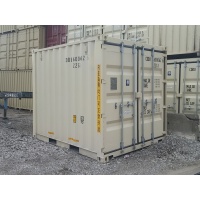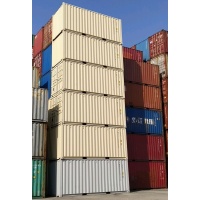As we approach the end of the year, it is natural to look back at what we have experienced over the past 11 months as well as to look to January and wonder what the coming year will bring. In terms of the container shipping industry, 2016 has been a period of what amounts to generational change in our business. This morning we heard the announcement of Maersk moving forward to purchase Hamburg-Sud now adding to a list of significant developments over the past ten months:
- French company CMA purchased Singapore-based NOL/APL
- China Ocean Shipping Company and China Shipping consolidated into one line
- Hapag Lloyd acquired UASC
- A “top ten” carrier collapsed when Hanjin Shipping went into bankruptcy
- The three top Japanese lines announced a joint venture
- The government on Taiwan is now shoring up their carriers with a loan; and,
- The carrier alliance structure is reconstituting itself into three new entities.
Simply summarized, the international ocean container supply chain is quite literally re-ordering itself, and the consequences of this restructuring will have significant effects on any number of transportation and trade related businesses, including the ports.
One of the most tangible changes that we have seen in the shipping industry over recent years is that of the ever larger container ship. In many ways, it is these vessels that are driving much of the change we are witnessing today.
Just a few years ago, the notion of an 18,000 TEU vessel was almost unfathomable when it was announced. Today, of course it is reality. In the United States, at least one line has demonstrated that ports in Los Angeles, Long Beach, Oakland, and Seattle are each capable of handling vessels of this size and class. It is likely only a matter of time before these Ultra Large Container Ships are regularly calling the U.S. west coast as part of scheduled deployments. Whether these vessels are deployed in the Asia-Europe or the Asia-U.S. trade lanes, they are going to cause a cascading of big ships replacing smaller ones around the world. Latin American ports will certainly see larger vessels calling as more of the biggest class of container ships are built and displace older, smaller predecessors.
The move toward larger ships is an effort by carriers to increase efficiencies and drive down slot rates. In many respects, the carriers have been successful in meeting their goals; however, their success has also been their downfall. Shippers have benefitted from freight rates that at are historic low rates, the economic performance of shipping companies has been nothing short of grim for several years on end. Clearly, building bigger ships is not the magical solution to creating more financial stability for the lines.
Carrier alliances, however, represent an arrangement that increases options for shippers while keeping their transportation costs low. For carriers, alliances create a path toward lower overhead, increased efficiencies, and optimized operations. Done properly, ocean carrier alliances ultimately serve the best interests of the shipper, which in turn is in all of our best interests as consumers.
Latin American ports should approach planning for the future with an eye on the potential impact the alliance system may have. Increasing efficiencies, both on land and at sea, is one of the key hallmarks of this new generation of alliances. Ports will need to be prepared to negotiate in a much more competitive business environment, with carriers looking to realize increased productivity from terminals while driving down costs they pay for to service a ship at port.
In the 1990’s, it fair to say that Latin America commenced a plan of action to better integrate itself in the global economy. Today, Latin America is now recognized as a viable emerging market in the global trade community. In the decade ahead, Latin American ports must focus on not only seaport efficiency and inland transportation connectivity. In essence, ports must ensure collaboration between sea and shore side operations – expand operations vision to include connectivity between terminals, intermodal centers, and inland transportation. In sum, the “supply chain”. For many ports the question will be not so much the extent of “growth” in your gateway, but the “service value” of the gateway.
As I mentioned earlier in my remarks, one of the consequences of industry consolidation and the emergence of new alliances is the cascading of newer, larger vessels replacing older, smaller ships across all markets. While this is an inevitable development, the alliances are motivated to achieve optimal deployments across their networks. Honest input from port directors will help vessel operations specialists build loops of services that are not only operationally efficient, but better serve shippers. I encourage each of you to initiate a conversation with the lines that call your ports about what size vessel your facility can handle so that ships are placed strategically throughout the Americas as opposed to tonnage just being dumped in the region’s oceans.
Ocean shipping has become an incredibly efficient industry and arguably any additional gains to be realized on the sea are only going to be incremental. Again, the real potential for achieving operational and economic efficiencies is going to be on the landside. I would hasten to add that it is not only good for the shipping company, it is beneficial to a nation’s economic development.
Throughout the world, we have repeatedly seen that highly developed domestic systems that support freight movement, particularly in the international trades, make a contribution far in excess of simply moving goods. Efficient physical infrastructure, linked to reliable transportation providers, served by efficient government services, makes more of a contribution toward lifting people into middle class jobs than many other development initiatives. The extent to which carrier alliances demanding landside efficiencies in Latin America beyond the fence line of a marine terminal are manifold. One of the most exciting possibilities is that it will help develop a system that not only improves supply chain operations, but allows the nations of this region to engage in the “value chain”.
The future of Latin America’s ports can be one of opportunity if governments and business executives realize the chance they have to build business and build the futures of their fellow citizens through trade. The potential of Latin America is impressive given the bounty of natural resources and the dynamism of its citizens. Latin America must seize the opportunity! Together, ports and shipping can play an invaluable role in securing an ever better future for the Americas.
Thank you.


















